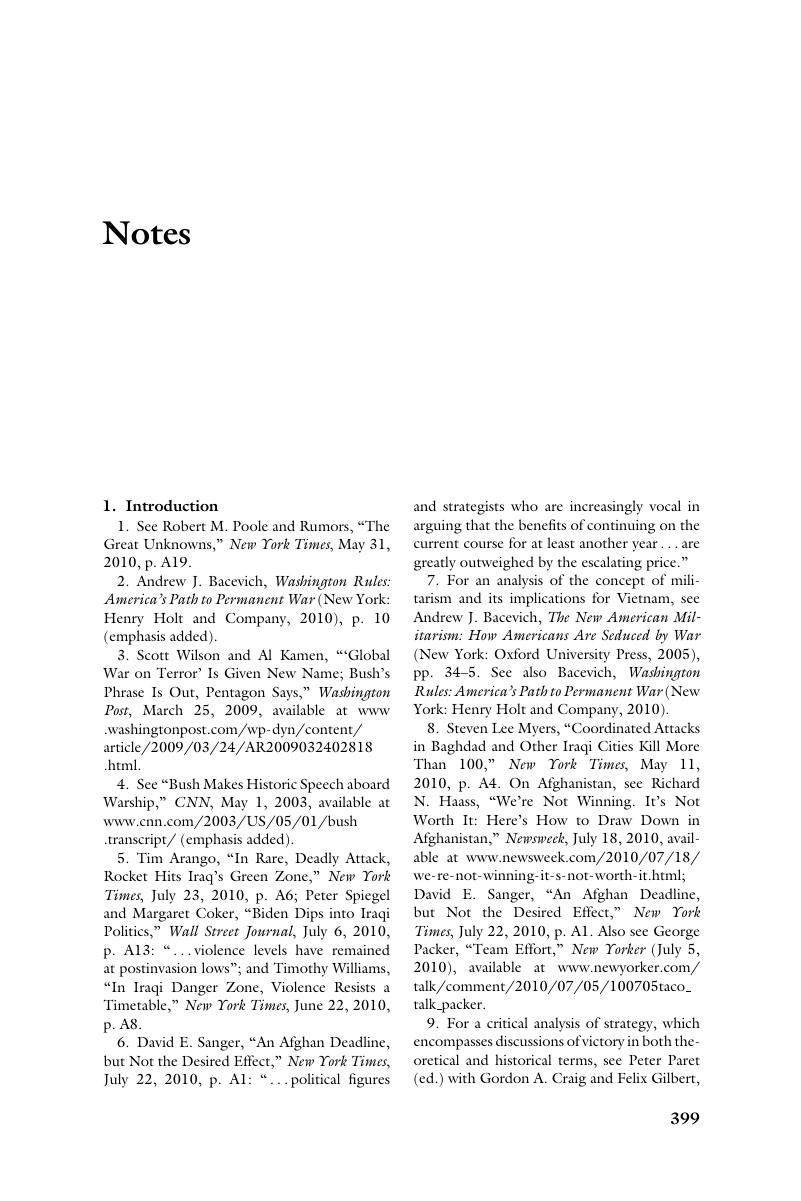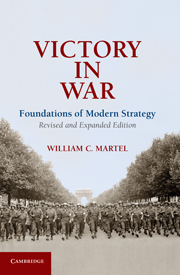Book contents
- Frontmatter
- Contents
- Preface
- VICTORY IN WAR
- 1 Introduction
- 2 Toward a General Theory of Victory
- 3 Historical Origins of Victory
- 4 Modern Origins of Victory
- 5 American Experience with Victory
- 6 American Logic of Victory
- 7 Libya
- 8 Panama
- 9 Persian Gulf War
- 10 Bosnia–Kosovo
- 11 Afghanistan
- 12 Iraq
- 13 Military Power and Victory
- 14 Implications for the Study of Victory
- Notes
- Index
- References
Notes
Published online by Cambridge University Press: 05 June 2012
- Frontmatter
- Contents
- Preface
- VICTORY IN WAR
- 1 Introduction
- 2 Toward a General Theory of Victory
- 3 Historical Origins of Victory
- 4 Modern Origins of Victory
- 5 American Experience with Victory
- 6 American Logic of Victory
- 7 Libya
- 8 Panama
- 9 Persian Gulf War
- 10 Bosnia–Kosovo
- 11 Afghanistan
- 12 Iraq
- 13 Military Power and Victory
- 14 Implications for the Study of Victory
- Notes
- Index
- References
Summary

- Type
- Chapter
- Information
- Victory in WarFoundations of Modern Strategy, pp. 399 - 552Publisher: Cambridge University PressPrint publication year: 2011



